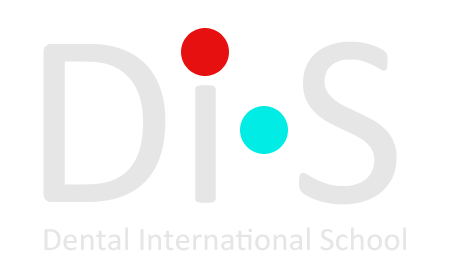Digital Aesthetic Functional Rehabilitation: Prosthetics, Implantation, Orthodontics
.png)
Digital Aesthetic Functional Rehabilitation: Prosthetics, Implantation, Orthodontics
6 lessons
Duration: 6 h 10 min
On the course you will learn how to work in the Kois principle:
– Create a perfect Digital Smile design considering:
- dental parameters
- facial driven features
- gingival parameters.
– Do aligner orthodontics according to Digital smile design treatment goal
– Create functional restorations on natural teeth and implants in a digital protocol.
Lecturer Tak On Tse Ryan is a Kois mentor.
-
1. Smile design. Principles and sequence according to the Kois principles1 h 1 min
-
2. Facial Analysis and Smile Design based on DSD and Kois Principle54 min
-
3. Occlusion Principle in Full mouth rehabilitation under Kois Principle1 h 15 min
-
4. Digital orthodontics in functional esthetics57 min
-
5. Total oral rehabilitation on natural teeth in a digital workflow1 h 8 min
-
6. Total oral rehabilitation on implants in a digital workflow52 min
Lesson program
– What information is required for the Smile Design? Parameters to be considered for Smile Design
– Lip dynamics and incisal edge position
– Etiology, clinical feature, diagnosis, and treatment of gingival smile
– Tooth proportion measurement tools
– Closed lengthening of the tooth crown with a laser
– Duchenne smile as a tool for the dynamics of the position of the upper lip and the canine exposure determination
– 6 stages of smile planning according to John Kois and Frank Speer
– The rule for assessing the position of the incisors "4\2\2" from Edward McLaren
– Golden Ratio for face proportions estimation
– Landmarks to create an approximal contact between the central incisors
– Phonetic analysis
– Integration of the midline with the occlusal plane and the interincisal midline on the model. Transferring data to the laboratory
– Algorithm: how to calculate the crown height increase
– Analysis of clinical cases.
Recommended for: Prosthodontists, Orthodontists, General dentists.
Lesson program
– Dental parameters. Fundamental objective criteria
– The position of the gingival zenith and the level of the maxillary frontal teeth
– The rule "50:40:30"
– Factors affecting the shape of the tooth
– Registration and transfer of the midline position to plaster models. Protocol of working with the "Ditramax" device
– Protocol for working with the John Kois dentofacial analyzer
– Requirements for DSD photography
– Sequential 6 steps of DSD protocol
– Combined use of the Kois dentofacial analyzer and DSD
– Working with the gingival margin level in DSD
– Lengthening of the crown part of the teeth in digital protocol
– VISTA technique and modified fibrin-associated recession closure technique
– The midline of the face. The concept of smooth facial contours
– Determining the shape of the anterior teeth during DSD, taking into account the anthropometric parameters of the patient. Morphopsychology
– Color and optical properties of the teeth
– Lip volume. Assessment of objective parameters and their correction.
Recommended for: Prosthodontists, Orthodontists, General dentists.
Lesson program
– Terminology:
- Maximal intercuspal position (MIP)
- Central relation (CR)
- Vertical dimension of occlusion (VDO).
– Gnathologic principles
– Condylar movements: Bennet movement, Bennet angle
– Anterior guidance
– Dynamic system: variability and adaptation
– Physiologic occlusion
– Acceptable functions: chewing, swallowing, speaking and breathing
– Constricted chewing patterns
– Occlusal dysfunction and parafunctions
– Three P's according to the Kois principles: Position, Place, Paceway
– Transferring the emergence profile of multiple implant restoration
– Kois questionnaire
– Risk assessment: occlusion stress test
– Functional occlusion therapeutic considerations
– Central relation technique:
- Bilateral manipulation
- Lucia jig
- Leaf gauge
- Kois deprogrammer
- Bite plane
- Occlusal splint.
– Characteristics of Kois deprogrammer
– Benefits of a Kois deprogrammer.
Recommended for: Prosthodontists, Orthodontists, General dentists.
Lesson program
– Minimal invasive dentistry
– Invisalign® principle
– Central occlusion and functional overjet
– Acceptable function and aberrant adaptive envelopes
– Constricted chewing pattern
– 3 features for functional diagnosis: Kois questionnaire, clinical examination, the mounted cast after Kois deprogrammer
– Choosing a method for malocclusion treatment
– DSD in orthodontic treatment planning. Clincheck usage
– Correction of X-bite and tilted midline
– Intrusion and retraction of lower incisors
– Invisalign® tooth movement.
Recommended for: Prosthodontists, Orthodontists, General dentists.
Lesson program
– 6 steps for total rehabilitation planning
– 6 categories of functional occlusion
– 3 features for functional diagnosis: Kois questionnaire, clinical examination, the mounted cast after Kois deprogrammer
– The Kois questionnaire:
- personal history
- dental history.
– Periodontal risk assessment
– Biomechanical risk assessment
– Bite and jaw joint
– Occlusal VDO: treatment planning decisions and management considerations
– Facial driven treatment plan
– Influence of stabilization occlusal splint on craniocervical relationships
– The rule of three P's: position, place, pathway
– T-Scan software: digital evaluation of occlusion
– Full mouth rehabilitation of severe Class III dentition: prosthetic driven orthodontic with raised VDO.
Recommended for: Prosthodontists, Orthodontists, General dentists.
Lesson program
– Guided implant surgery and DSD
– Facial analysis for the digital planning of full mouth implant rehabilitation
– Guidelines for maxillary incisal edge position
– Gingival architecture
– Mandibular incisal edge
– Mandibular tooth display analysis
– Speech problem management
– Taking accurate implant impression
– Transferring the CR and tooth position from the provisional to final
– Biological and mechanical complications in full mouth implant rehabilitation
– Avoiding complications
– Cross mounting into articulator
– Difference in biomechanic between tooth and implant
– Implant and tooth supported fixed prosthetics using Pekkton framework
– Using the digital-centric record technique to enable digitally planned implant treatment for an edentulous patient.
Recommended for: Prosthodontists, Orthodontists, General dentists.
-
Dr. Tak On Tse Ryan
Graduated from Kois Center and become mentor in 2021. Associate fellow in American academy of Esthetic dentistry. Former instructor of the Implant and Aesthetic CE program at the University of Southern California. Master and Global instructor of Digital Smile Design (DSD). Member of Invisalign® Global faculty and APAC faculty and also global speaker of invisalign. Vice President of the Chinese Academy of Esthetic Dentistry (CAED).

